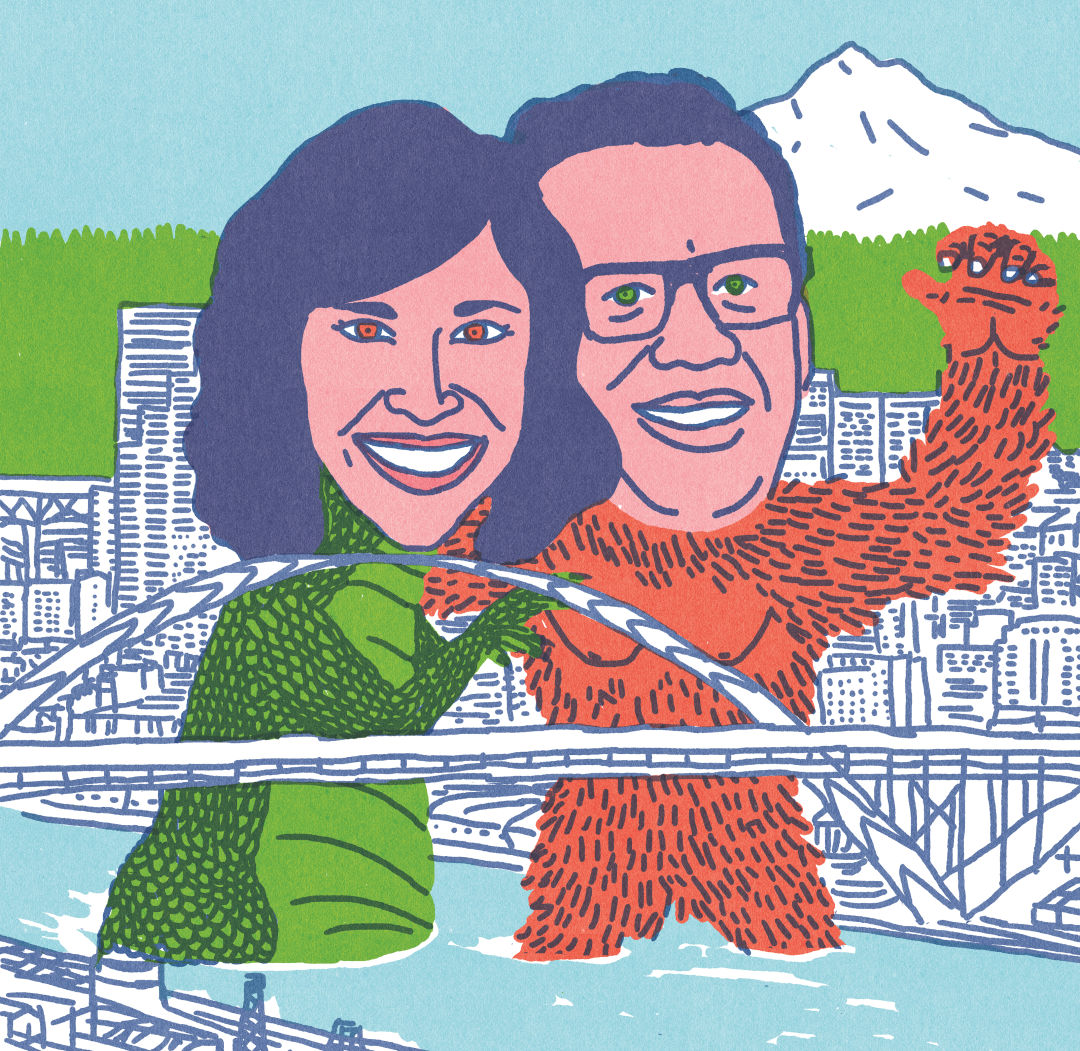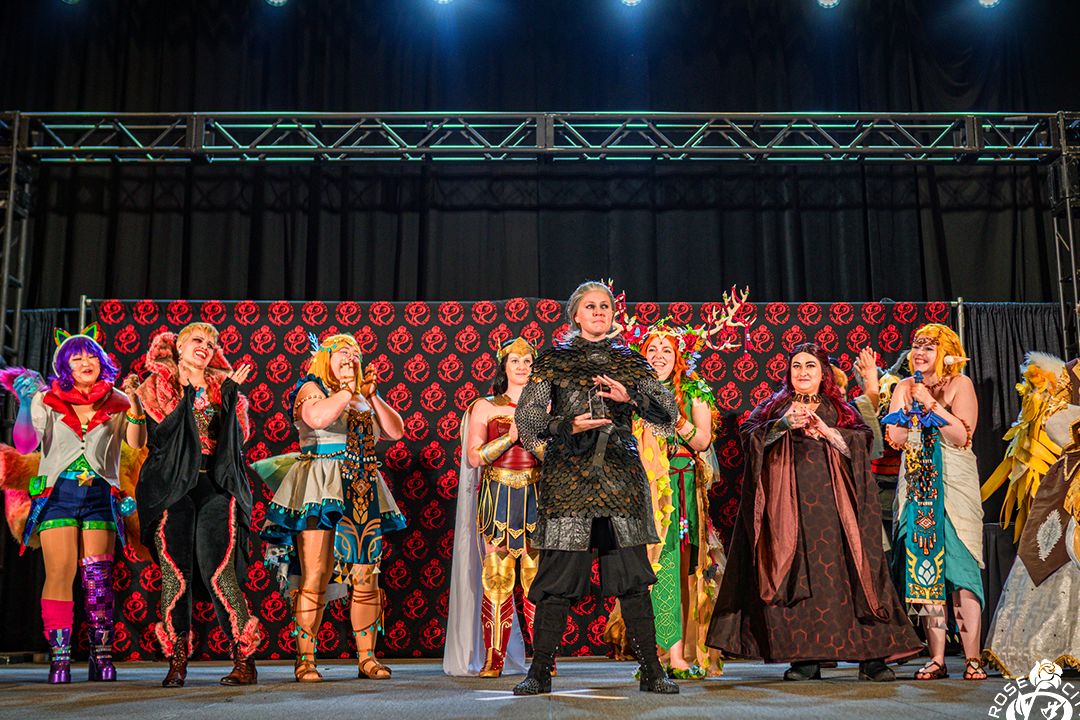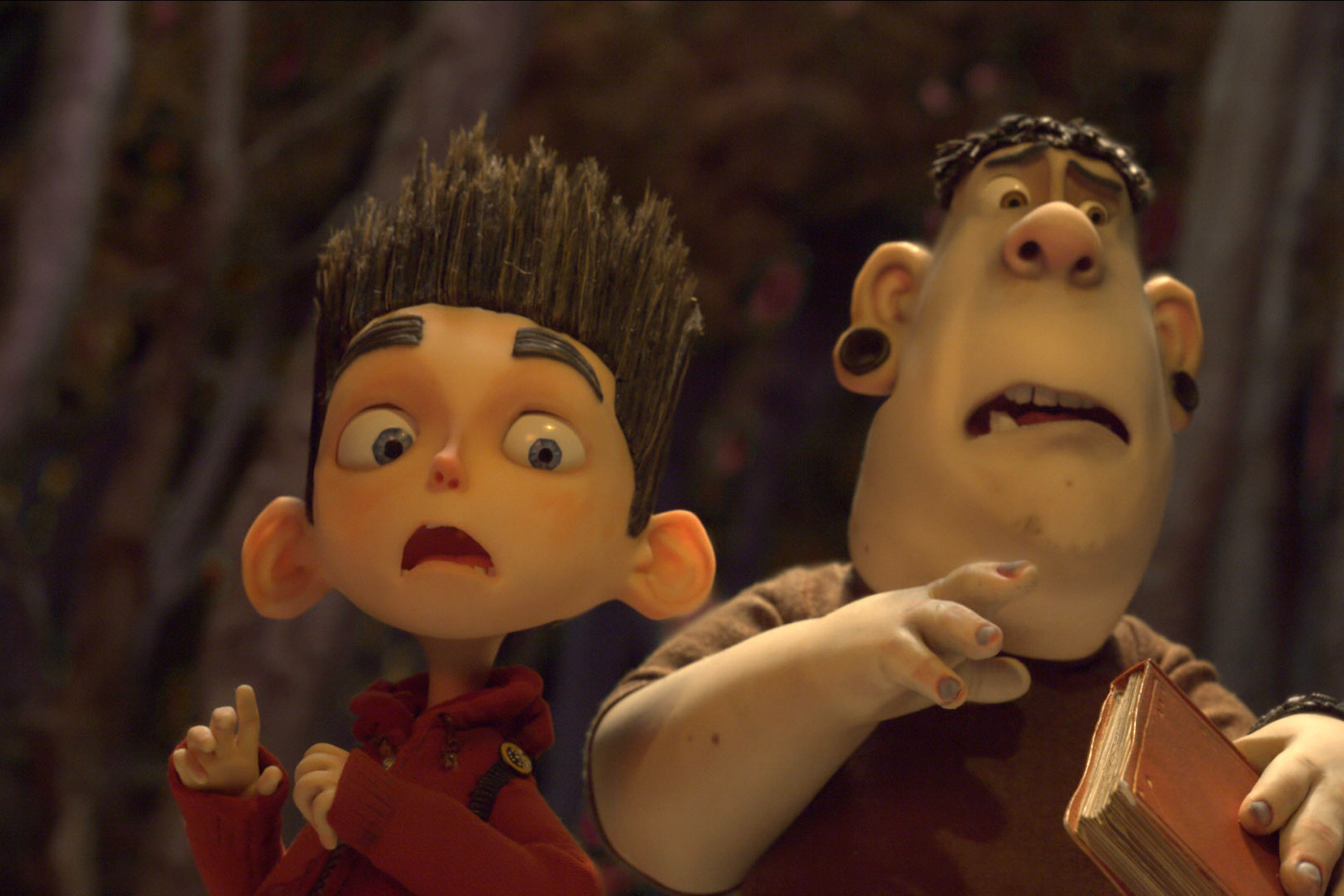Portlandia Is Ending. Did the Show Really Ruin the City It Spoofed?

Image: Lorenzo Gritti
"It is the end of the dream, this season,” says Carrie Brownstein, the punk guitarist turned cable TV star, answering questions during a break from some of the final shoots for Portlandia. A valedictory feel is in the air. Tim Williams, the executive director of the state’s Office of Film and Television, is on hand to unveil a plaque commemorating the show, to be given pride of place in city hall. Tobias Read, the state treasurer, joins in, calculating the show’s effect on the city in numbers over its eight seasons: Portlandia, he says, meant some $36 million in direct spending to the state, and 200 annual jobs.
But, of course, Portlandia is more than an economic stimulant. Since it premiered in 2011 on the IFC network, the sketch comedy show starring Brownstein and Fred Armisen has served as the city’s calling card, full-length mirror, and occasional punching bag, becoming part of Portland’s very DNA. There’s a reason the city’s tourism bureau devotes an entire section of its website to the show, promising that its “guides will give you a feel for where Portland and Portlandia intersect.” Portlandia became an ambassador for the city—a cable TV show that doubled down on the “keep Portland weird” brand, and made it mainstream viewing.
On January 18, the show begins its final season, a long farewell to knot stores and putting birds on everything. It will leave behind, let’s say, mixed emotions. Portlandia’s soft-touch skewering of white liberal hipsters and their First World problems alienated as much as it entertained. There were sketches that perfectly satirized a particular Portland: a scene about two diners inquiring with earnestness about the emotional state of the chicken on the menu—a chicken who memorably turned out to be named Colin before meeting his fate—was a spot-on take on our city’s obsessive food culture.
On the other hand, Northeast Portland bookstore In Other Words—the locale and an inspiration for the show’s fictional feminist bookstore Women & Women First—spoke for some with a September 2016 blog post titled “Fuck Portlandia.” The post decried the show’s “net negative effect” on the city, with reasons ranging from allegedly poor compensation the store received for serving as a location to what it called “trans-antagonistic and trans-misogynist” jokes and a lack of racial diversity. The author added a jibe for “fueling mass displacement.”
A bit fierce? Sure. But, over the years, disdain for Portlandia became a badge of local cred. The show first launched with its “Dream of the ’90s” portrait of a chilled-out, arch-bohemian city. In the years that followed, rents and cost of living shot up, and a death watch on scruffy “Old Portland” bars, neighborhoods, and values became a niche fixation as development reworked the cityscape. Much angst flowed Portlandia’s way—though whether the show was supposed to be a symptom, a cause, or an annoying byproduct of growth was often fuzzy.
Those working in the film industry have a different perspective. “It’s a great source of income and work for so many indie Portland artists,” says filmmaker Alicia Rose, who has a cameo in the final season. “It’s been a great breeding ground for local talent, and that has really made a difference for people like me who want to make world-class media on low-class budgets. I’m over the people-being-over-it thing.”
Meanwhile, national audiences were watching—almost 600,000 viewers tuned in for the show’s second season. That number fell to 276,000 by the 2016 season, however. And the national picture changed, too. With an overtly misogynist administration running the country and cascading revelations about predatory behavior by men in power, Portlandia bits like 2016’s “What About Men?”—in which two male characters played by Armisen and Brownstein decry that “none of these movements are about us!”—resound very differently.
“Our show started during the Obama administration,” Brownstein says. “It felt like we were in this post-whatever society—post-race, post-gender—and that the house had been built, and now all we had to do was decorate it as a society. Now, it turns out, maybe we had a terrible foundation.”
Still, both of Portlandia’s founders resist suggestions that the show has something to answer for when it comes to the city’s growing pains.
“I can’t measure what effect a TV show on cable has on a city,” says Armisen baldly. Brownstein, who lived in the fabled Old Portland, too, takes a deeper dive: “When people see the differences in a city, our show is an easy target for what has changed,” she says. “When you look at San Francisco and the other cities on the West Coast, it was inevitable that Portland would suffer or benefit from the same growth that those other cities have. We have just been a focal point for people, and, because it’s a show that’s in conversation with the city and a city in conversation with itself, it’s hard not to see it as intrinsic to some of the changes.”
She puts a finer point on it: “I don’t think the condos are because of our show.”
We won’t have to wait long for the proof. Come April, Portlandia will be off our screens for good. As Brownstein points out, “You’re going to have to find something else to talk about in terms of how Portland’s changed.” She smiles. “It’s like, ‘Wait! What now? There’s no Portlandia, but it’s still changing!’”




